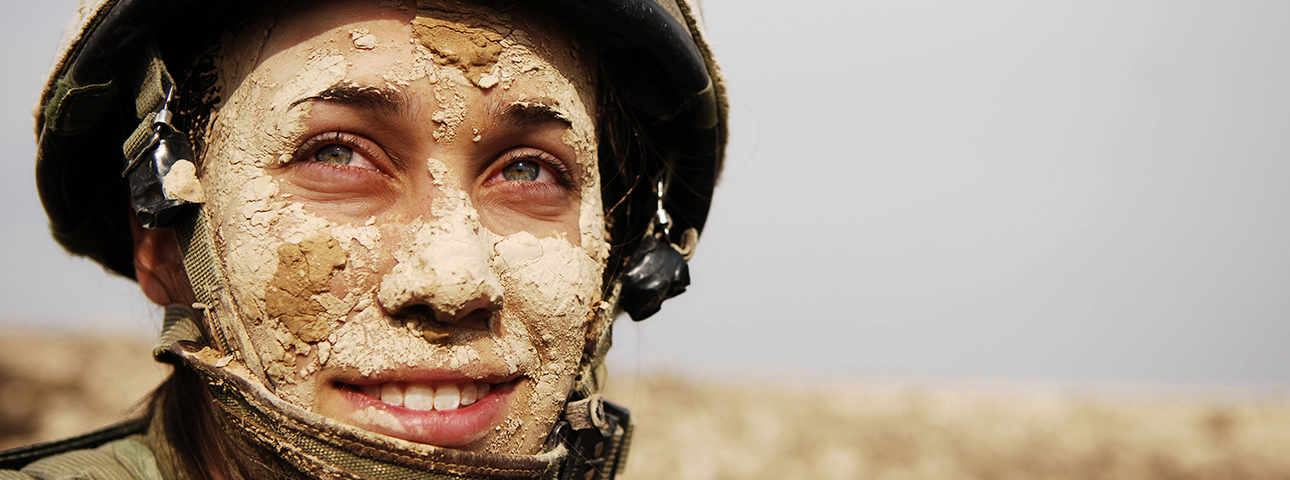Defending Women’s Rights to Serve Equally
Creating a gender-equal military is a complicated task, but the IDF must not forget its responsibility, nevertheless many Israeli soldiers have not been trained on gender equality says Idit Shafran Gittleman.

Flash 90
Just the other day, a woman “Lookout” (Tazpitanit) soldier alerted forces on the southern border to a border breach and averted a terrorist attack which could have cost the lives of many. Since IDF’s establishment in 1949, it has been one of the few countries in the world with compulsory military service for women. New positions have opened up to women in order to free up men serving in non-combat positions for combat duty. Women were mostly assigned to training units.
The turning point with regard to integrating women in the IDF came in the 1990s, after the Alice Miller case (1995). Miller appealed the IDF’s refusal to allow her to take the screening tests for its pilot’s course, on the grounds of her gender. The High Court of Justice ruled that women are entitled to equality of opportunity in their military service —both formally and substantively.
After the ruling, more and more positions were opened up to women. The first was service in aircrews, followed by fourteen more positions, including shipboard duty in the navy, the Border Police, anti-aircraft units, the Caracal infantry battalion, and the airborne medevac system. The percentage of positions open to women ballooned; today, 86% of positions are open to women. Additionally, according to IDF data, between 2013 and 2017 the number of women serving in combat positions in the ground forces jumped by 350%; since 2005, the number of female combat soldiers has increased sevenfold.
At the same time that service opportunities for women expanded, the IDF has had to deal with the tensions arising between joint service of women and religious soldiers. A head-on collision between the gender revolution in the IDF and the demands of soldiers adhering to religious laws about modesty and gender separation became unavoidable. In an attempt to resolve tensions in September 2016, the IDF issued the Joint Service Order, which aims at regulating service by women who serve alongside men and at protecting the rights of observant soldiers.
A typical manifestation of this conflict recently came to the fore when the IDF decided not to allow women to serve in the armored corps, despite a successful pilot of mixed tank crews. It is interesting to note that the IDF justified the decision on economic grounds. Taking a look at the Joint Study Order, a recent study by the Center for Security and Democracy at the Israel Democracy Institute shed light on the complexity of these tensions. 500 newly released soldiers (between 1-3 years), were interviewed between January 28-31, 2019. The study found that 78% of religious male soldiers and 46% of female soldiers agreed that joint service in combat units has created daily challenges. Additionally, 52% of all soldiers reported that while commanding officers were considerate of the needs of both groups (women and religious male soldiers), only 39% thought that the IDF as a whole made the same effort. The study also made clear that a more significant implementation of the Joint Service Order and its principles is required in order to further true gender equality. The survey found that 43% of soldiers never heard of the Order, and an additional 28% heard of it but never had any training on the topic.
We should not make light of the steps taken by the IDF to integrate women into almost all its units. At the same time, we must not forget the message that the High Court intended to convey, namely, that the principle of equality is not upheld if it must yield whenever “security and defense needs” come at its expense. The complexity of Israeli society permeates the IDF, and as the People’s Army, it will continue to uphold its commitment to equality for all its soldiers. IDF can manage the different tensions, including between women and men, in a way that promotes an equitable and just society in Israel.
The article was published in the Jewish Chronicle.
